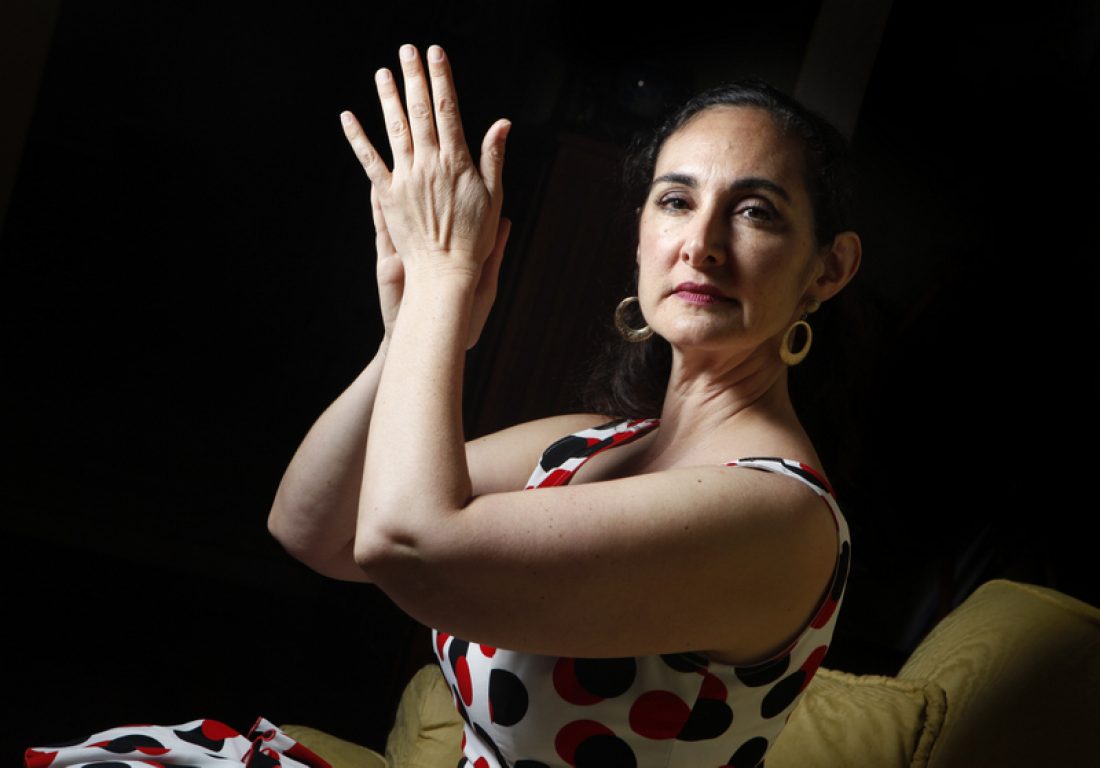By NINA LARAMORE / Towns Correspondent
When she was 3, Sara Zanolini saw “Swan Lake” and knew she wanted to be a dancer. At 7, while in Spain, she experienced a bullfight, drank Sangria, saw flamenco dancers and instantly knew the type of dancer she wanted to be.
But flamenco was not being taught in the Bay Area. She settled on ballet.
“I studied ballet for the next 10 years with the San Francisco Ballet,” Zanolini says. “I was committed. When I was 11, we moved to Santa Rosa, and I took the bus after school each day into the city for classes.”
Zanolini performed in the Nutcracker every year, starting out as a mouse and progressing to the part of Clara. During college she took two years off to live a “normal life,” but realized she wasn’t happy unless she was dancing.
Then in the 1980s, she heard the “tickety-tock” sound she remembered in the next studio, found flamenco being taught and immediately got started. More than 20 years later, she is immersed in the energetic, staccato-style dance form, teaching classes in Petaluma at Footloose Dance Center and performing in the greater Bay Area.
Flamenco originated in southern Spain, coming from the Andalusian music, song and dance as influenced by the Romani or gypsy people.
“The singing is the heart of flamenco,” Zanolini says. “It tells of happiness but also of the pain and sorrow of a people who were outcasts. Moors, Jews and gypsies who banded together in their pain.
“The singing is the cries and wails of pain and desperation, and then the instrumentation was added. The dance is the least important. We are reflecting what is going on with the singing and the guitar.”
Even those who don’t know the Spanish language get caught up in the universal language of emotions.
Although she can sing the music, Zanolini often hires musicians for her classes so students can learn how to work with them.
“You have to listen to each other. If the dance goes faster, then the musician and singer must go faster. It’s important to learn the interplay.
“The gypsies in Spain know all the parts. They can sing, play the guitar, cajon, castanets, palillos and do the palmas (clapping). Flamenco is a microcosm of the world, with music and songs passed down for generations.
In ballet, everything is set in stone with no variation or deviation, Zanolini says. “Flamenco is live and complex and on the fly. It’s happening, and you have to adapt. The guitar may inspire you to dance differently or. if the musician or singer is very good. it inspires you to bring out your best.”
Although people of any age, size, gender and athleticism can learn the dance, Zanolini says most of her students are middle-aged women. “My theory is that in that time of our life, we are secure enough in ourselves to express ourselves strongly,” she says.
Traditional flamenco dancers do not hit their peak until their 30s and continue to perform into their 60s. Young adults are not considered emotionally mature enough to convey the soul of the dance.
In 2010, UNESCO declared flamenco a Masterpiece of the Oral and Intangible Heritage of Humanity.
As a dancer, Zanolini says her biggest challenge was getting the ballet out of her flamenco. Both dance forms require listening to the music, musicality, gracefulness, technique and emotion. Where ballet is light and silent, flamenco is grounded.
“In ballet you are supposed to be young and thin, silent and light,” she says. “Flamenco is noisy and deeply passionate, dramatic and grounded.”
Women’s costumes are essential to the dance, she says. The traditional flamenco outfit is a fringed silk shawl, lace-trimmed fans that accentuate the dancer’s hand and wrist movements, and an elaborately styled dress with a long frilly bata de cola skirt that weighs 10 pounds and trails five feet behind the dancer in flowing ruffles.
Traditional flamenco shoes have nails driven into the toe, ball of the foot, and heel. Every element of the woman’s costume is used to portray intense emotion.
“When I watch a flamenco dancer, I know part of them,” Zanolini says. “Your soul is seen. People I haven’t met have come up to me after a performance and said, ‘How could you do that? How could you bare your soul like that?’
“I can become really emotional. Sometimes, I let go and cry in the dressing room after a performance. It’s a physical release. It’s a phenomenon of giving your all.”
Zanolini’s flamenco classes are $20 each, ongoing at the Footloose Dancing Center, 5320 Old Redwood Hwy., # B; 795-8058. Information about classes and upcoming performances is posted at SaraMariaflamenco.com.

